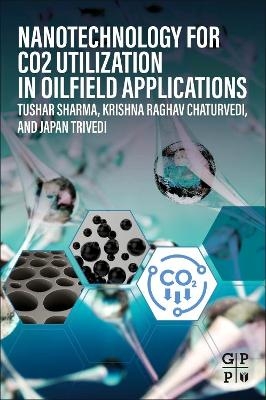
Nanotechnology for CO2 Utilization in Oilfield Applications
Gulf Publishing Company (Verlag)
978-0-323-90540-4 (ISBN)
Finally, the authors discuss the combined application of CO2 and nanofluids, listing challenges and benefits of CO2, such as carbonation capacity of nanofluids via rheological analysis for better CO2 utilization. Supported by visual world maps on CCS sites and case studies across the industry, this book gives today’s engineers a much-needed tool to lower emissions.
Dr. Tushar Sharma is currently working as an Associate Professor at Rajiv Gandhi Institute of Petroleum Technology (RGIPT), Jais, India. He is also the Head & Lead Instructor at Enhanced Oil Recovery Laboratory at RGIPT. His main areas of research include Enhanced Oil Recovery, Nanofluids, Emulsions, and Rheology and has expertise in the handling of Rheometers, Core-flooding equipment, and surface tensiometers. Dr. Sharma received his doctoral degree from IIT Madras for his work on Pickering emulsions and their application in EOR. He has authored over 55 papers in leading international journals. Dr. Sharma has also conducted training seminars for engineers from multiple oil and gas corporations. Beyond his immediate area of expertise, Dr. Sharma is also the faculty coordinator of the Society of Petroleum Engineers (SPE) student chapter of RGIPT. Krishna Raghav Chaturvedi is a Senior Research Fellow at the Enhanced Oil Recovery, Rajiv Gandhi Institute of Petroleum Technology (RGIPT), Jais. He earned his Bachelor’s and Master’s degree in petroleum engineering from the University of Petroleum & Energy Studies, Dehradun and RGIPT, respectively. His research focuses on the synthesis of novel single-step silica nanofluids for improved CO2 flow behavior and reduced formation damage. Primarily, this work focuses on the development of new nanomaterials for improving the efficacy of CO2-based EOR in depleted oil fields and involves the use of core-flooding equipment, HR-TEM, SEM/EDX and high-pressure reactors for CO2-absorption studies. Mr. Chaturvedi has currently published 8 papers in internationally recognized journals. Previously, he worked as a real-time drill log analyst for oil rigs in the US shale patches in Midland and Oklahoma. Dr. Japan J. Trivedi is Professor with the Faculty of Engineering - Civil and Environmental Engineering Department at the University of Alberta, Canada. He conducts research in various areas of oilfield technology. His primary areas of research are chemical and CO2-EOR for conventional and unconventional reservoirs, coal gasification, reservoir simulation etc. He heads a multi-cultural diverse research group at UofA and teaches EOR/Research simulation to Undergraduate and Graduate students. He also serves on the Editorial board of several prestigious journals like the Journal of Petroleum Science & Engineering.
1. Introduction 2. Synthesis and characterization of nanofluids for oilfield applications 3. Rheological characterization of nanofluids 4. Why CO2? 5. CO2 Enhanced Oil Recovery (EOR) process and injection process 6. Carbonated nanofluids for EOR and improved carbon storage 7. Mass transfer by molecular diffusion 8. Rock dissolution and formation damage in CO2 EOR 9. Role of nanofluids in improving CO2 storage and stability in subsurface reservoir 10. Density-driven natural convection during CO2 geo-sequestration 11. Dimensionless numbers and scaling criteria 12. Retention of nanoparticles in porous media: Implications for fluid flow 13. CO2 foams 14. Solid CO2 storage in nanofluids for improved CO2 utilization 15. Conclusion and future research direction
| Erscheinungsdatum | 24.06.2022 |
|---|---|
| Zusatzinfo | 150 illustrations (50 in full color); Illustrations, unspecified |
| Verlagsort | Austin |
| Sprache | englisch |
| Maße | 152 x 229 mm |
| Gewicht | 480 g |
| Themenwelt | Technik ► Elektrotechnik / Energietechnik |
| Technik ► Umwelttechnik / Biotechnologie | |
| ISBN-10 | 0-323-90540-4 / 0323905404 |
| ISBN-13 | 978-0-323-90540-4 / 9780323905404 |
| Zustand | Neuware |
| Haben Sie eine Frage zum Produkt? |
aus dem Bereich


